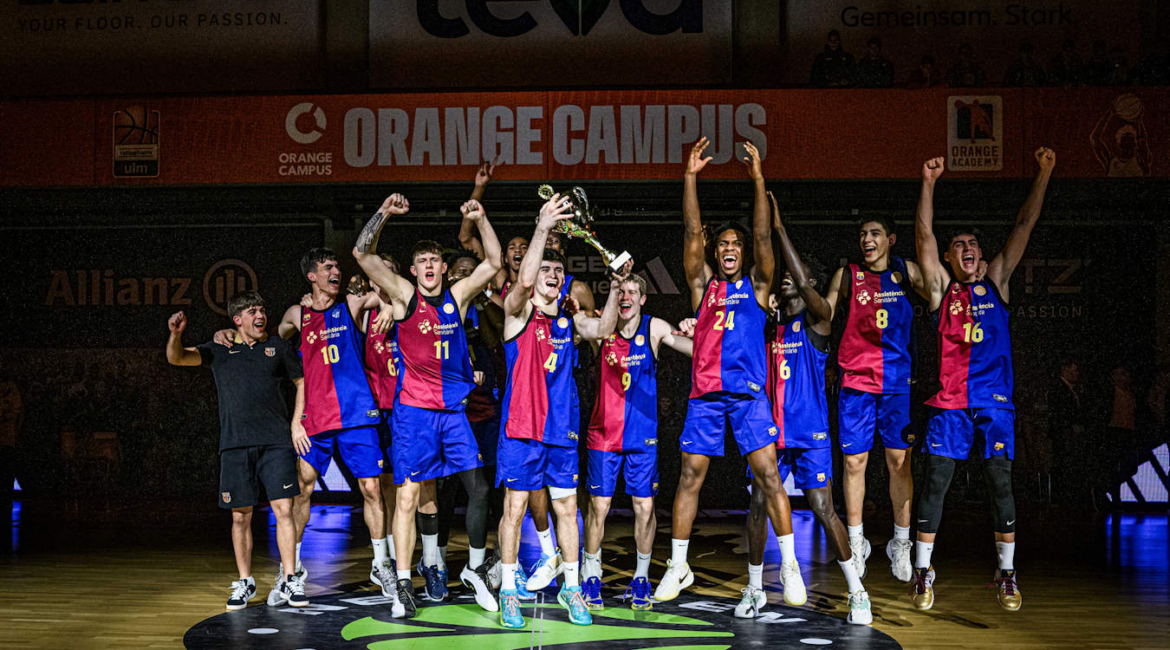The third qualifier of the NextGen Euroleague Tournament took place in the Orange Campus based in Ulm, a modern centralized structure and a turning point for basketball in the German town, where our team of scouts attended a three-day event full of talented youngsters. At the end, Barcelona prevailed over Zalgiris Kaunas in a thrilling game which ended 91-89. Mathieu Grujicic was named the tournament MVP and was joined in the All-Tournament Team by Adam Atamna, Davi Remagen, Endurance Aiyamenkhue and Dovydas Buika.
FC BARCELONA
The Catalan roster dominated throughout the tournament, with the only exception being the final — when the sheer strength of Zalgiris Kaunas truly tested their mental toughness in fending off the Lithuanian comeback. Seems right to start with the MVP Mathieu Grujicic. The 6’5 tweener played with great efficiency, mental control and an increasingly mature awareness of his own impact on the court: despite the limited room for further development, he impressed with his fluid movement, navigating through defensive lanes and overcoming defenders with a combo of quick first step and crossovers. His catch-and-shoot ability shows promise and, even if the form beyond the arc still needs work, his 18.5 points with 54% inside and 47% from long range sufficiently explain the German’s three-level scoring impact. As a smooth finisher, Grujicic often served as the primary offensive option when the team needed him most, as proved in the final when he raised up to create the decisive gap.
The sheer physicality of Barcelona was further confirmed by the formidable interior duo of Arturas Butajevas and Sayon Keita. Butajevas proved to split equally both 4-5 spots, through rolls in and pop out movements, despite not being vertically explosive or quick and fluid. His shooting mechanics are still a bug as confirmed from his 27% from the three point line: his release is quite wavering and lacks a smooth vertical release. However his lean, solid frame and growing defensive awareness made him an asset on both paints with solid 12.5 points (65% inside) and 6.5 rebounds. In contrast, the 7‑foot center from Mali, is settling down the base with 8 rebounds and 3.2 blocks per game to be a remarkable rim protector: he already makes effective off-ball cuts and reactive hands around the rim to convert easily inside. His aggressive vertical game is marked by a reliable catch-and-finish ability and an emerging hook shot with good touch (13.5 points with 77% inside), but still needs to build more strength in the post and sharpen his ground moves.
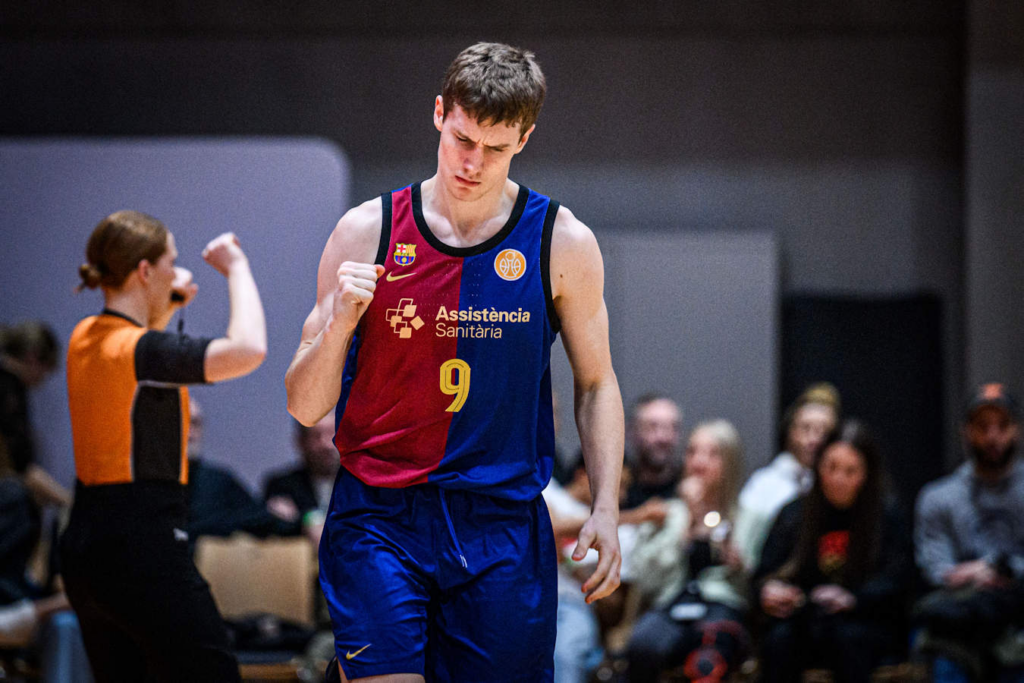
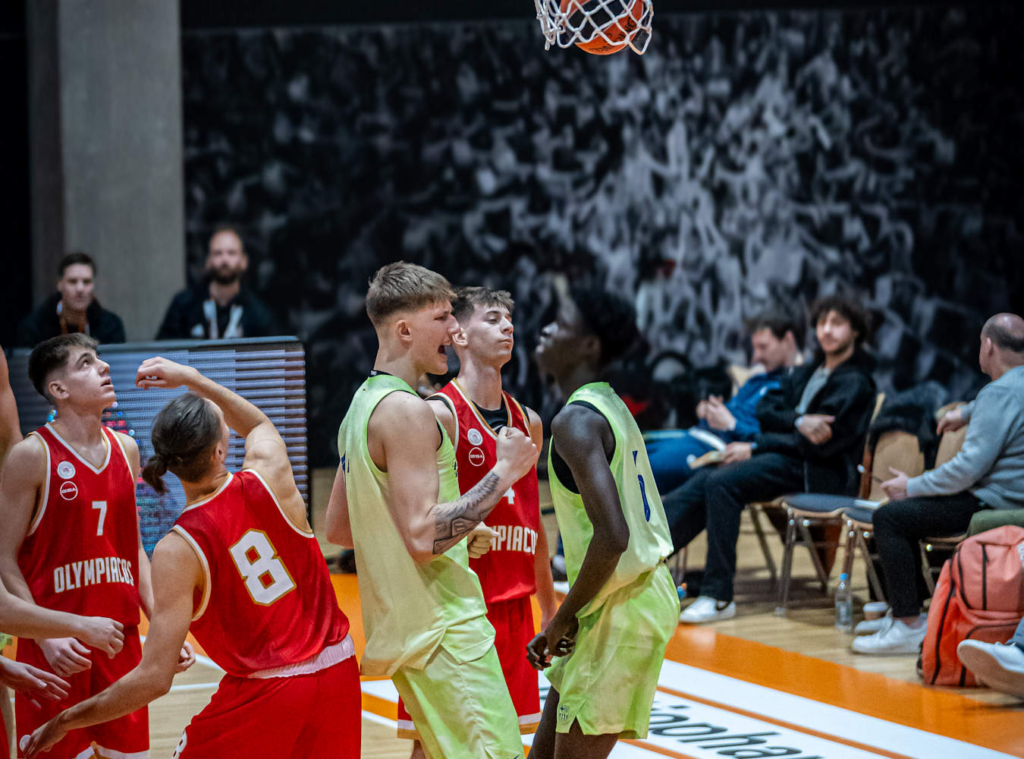
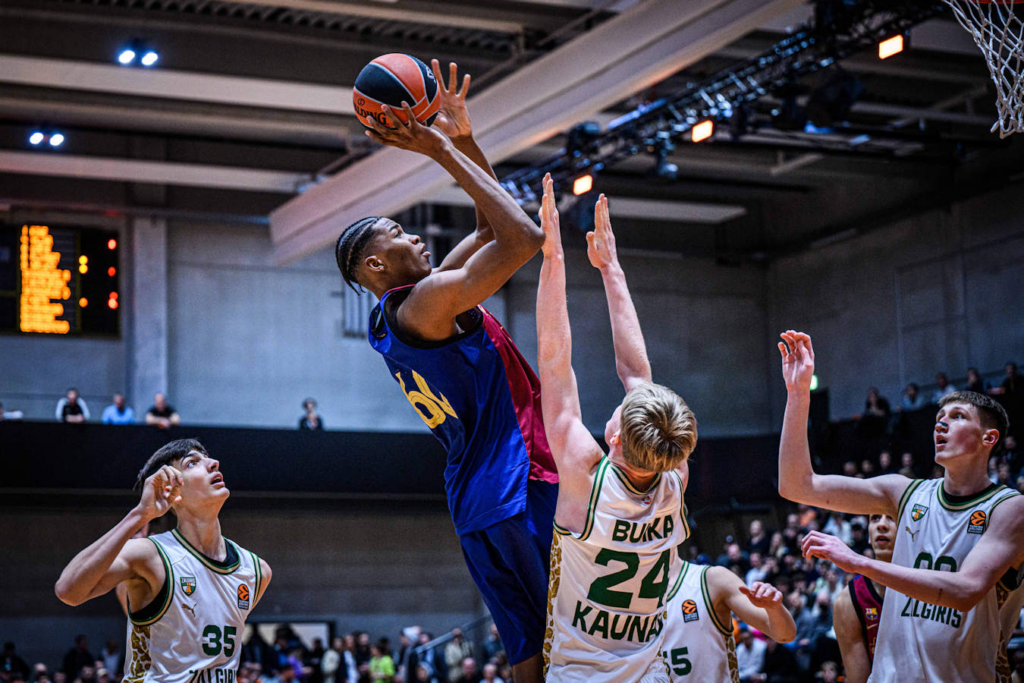
Complementing the core were role players like Lluc Pluvinet, Rafa Villar, and Daniel Gonzalez. Pluvinet injected energy into the offense with his IQ and hustle mindset, doing the right things at the right time, statistically translated by his 13.2 PIR in 20 minutes per game. Villar proved to be efficient with few touches offensively, triggering his teammates in different ways (5 assists per game) but keeping his defensive stalwart identity. Gonzalez, another key guard, is a consummate system player whose pragmatic approach on both ends of the floor, combined with his ability to read the game and anticipate plays, ensures that the team’s offensive and defensive schemes run smoothly (notable numbers are his 5.5 assists and 2.5 steals per game).
Yet, the talent that captured the most attention was Mohamed Dabone, the 6’11 forward from Burkina Faso. Despite logging minutes in only the final two games of the tournament, Dabone has emphatically demonstrated why he is considered a full-fledged NBA prospect. Showcasing a long-limbed frame with coordination, fluidity that blends modern skill sets with versatility, he offers a various set of offensive solutions while also making an impact on the defensive end with his impressive reach. His ability to throw down powerful dunks, along with an emerging catch-and-shoot game highlights athleticism and aggression rarely seen at this level. Although he still needs to mature technically and further develop his defensive acumen, his explosive performances have already made a significant impression. – Federico Gaibotti
ZALGIRIS KAUNAS
A rollercoaster of emotions packed into three busy days for a Zalgiris team that insists on dazzling scouts and fans with high-level prospects and hard work. Leading them was Dovydas Buika, part of the All-Tournament Five. A consistent rim and paint attacker, Buika controlled the Lithuanian’s team offense, finishing with 20.2 points and 4.2 assists per game, combined with 5.2 rebounds and 1.8 steals. In his third NextGen Euroleague (former ANGT) qualifier – fourth presence overall, he didn’t disappoint. His ability to handle the ball at 6’6 and create shots for himself and others was steady throughout the four games, with the wing almost guiding his team to victory. Despite some instances where he tried to force shots – natural with the volume of on-ball plays – he was still capable of offering his team pause and patience. A three-level scorer with an impressive competitive spirit on the defensive end, Buika continues to showcase his maturity and the certainty that he belongs in higher levels.
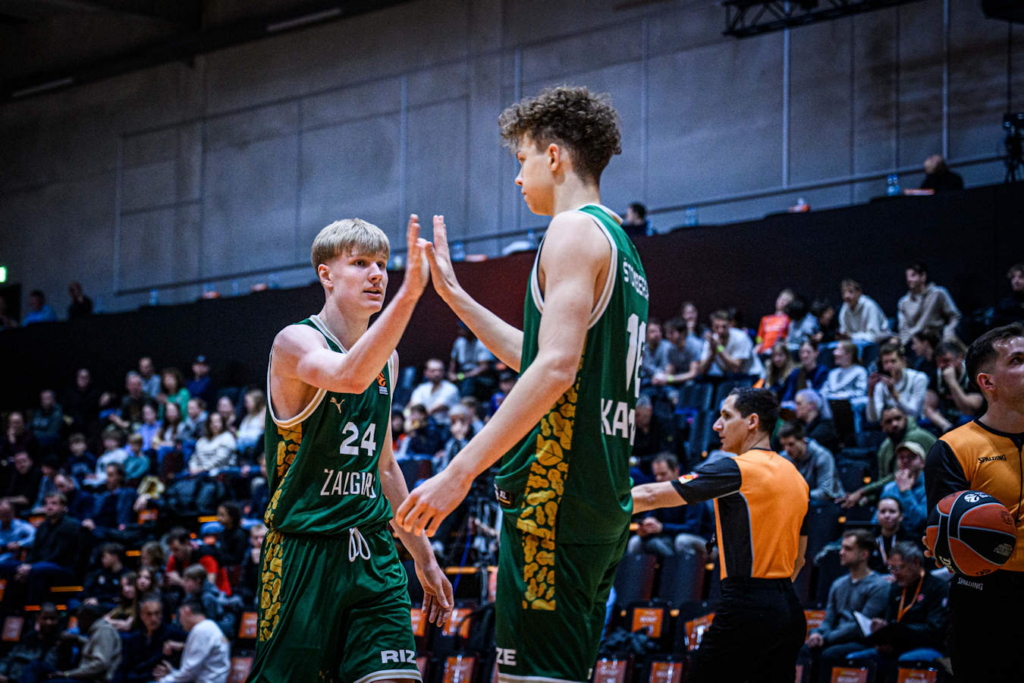
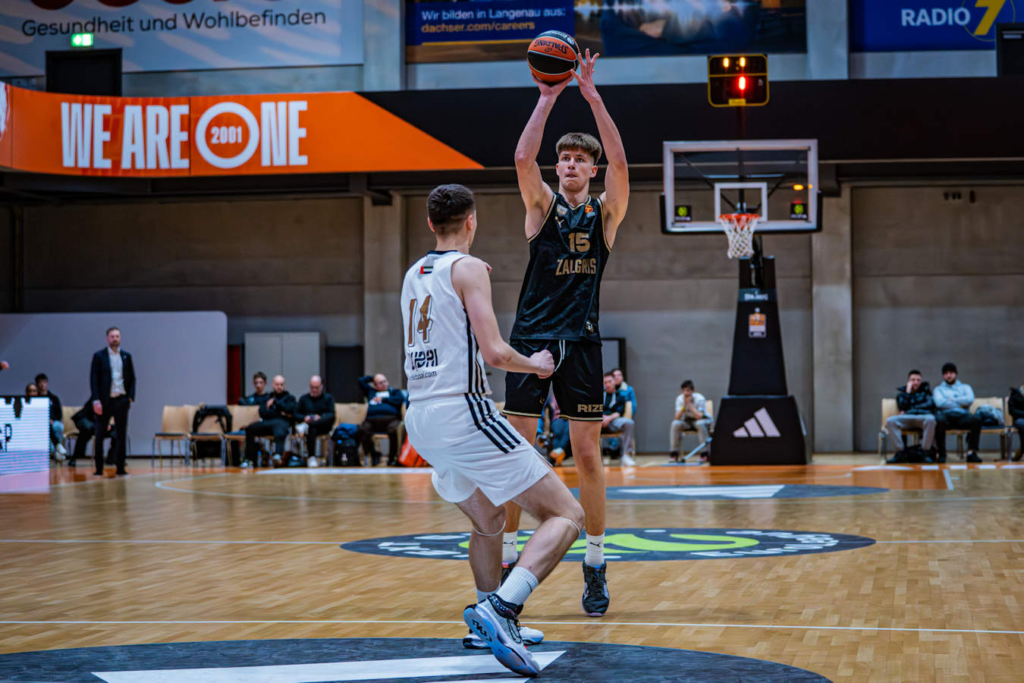
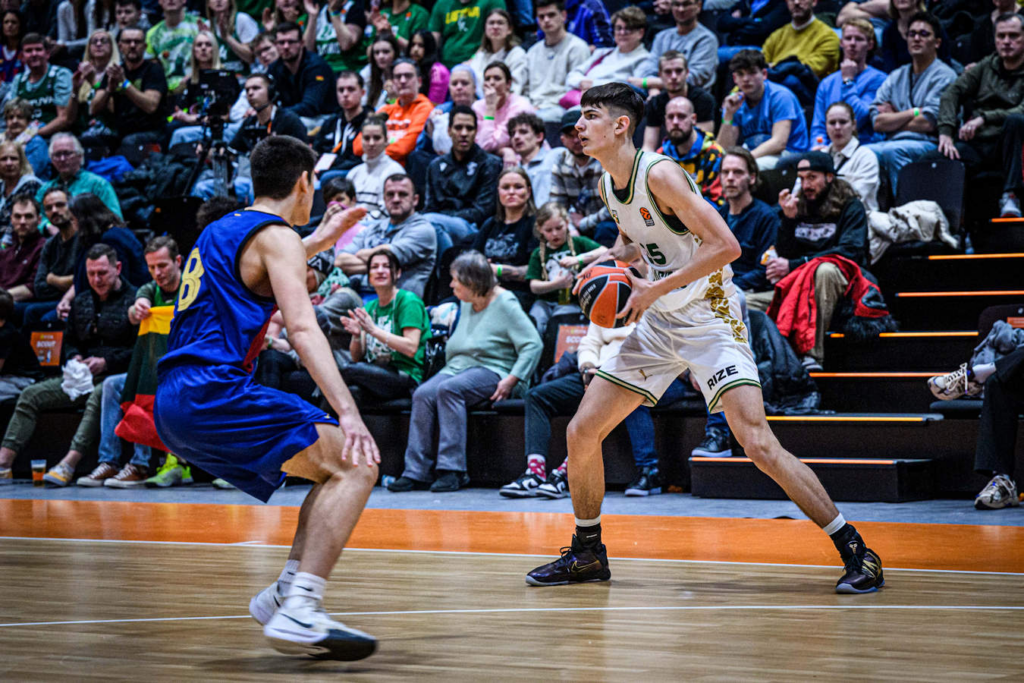
The 6’10 pairing of Dominykas Daubaris and Ignas Stombergas followed Buika. While Daubaris struggled a bit with his efficiency, his flashes as a stretch big who can create his own shot, after a difficult injury that sidelined him for months, are exciting signs. Capable of creating from the low post, his footwork and sense of when to attack are intriguing. Didn’t really shoot the ball well, getting in his own head at times, although he shows promise once he learns to settle down a bit and take the shots that are available to him. When the outside shot wasn’t falling, he used his advanced dribble for his size to get inside and punish slower bigs. A really good defensive reader and helper, he helped create a barrier inside as a 4 that made it tough on opposing big men. Right alongside him, Stombergas was as efficient as players come, especially playing a year up. Finished at a 72.4% rate for 13.5 points, with 8.8 rebounds and 1.2 blocks a game. With a simple approach to the game, he won’t try to get out of his comfort zone too much. Acts as a screener and roller or as a baseline roamer looking to pounce on open opportunities. Capable rebounder, he ended up with 3.8 offensive boards, creating problems to defenses with his activity. On the other side of the ball, his rim protection was noticeable, igniting many Zalgiris’ runs with his length and rim deterrence.
With a deep roster, Maksim Brnovic was a standout with his impressive length and ability to play on the ball. With 7.5 points and 6.0 rebounds at 6’8, he was a constant weapon looking to get inside, both off closeouts or his own dribble creation – pick and roll or isolation. Proved to be a player to follow given his fluidity as a handler and still a lot of room to grow. Kajus Mikalauskas‘ efficient shooting and timely cutting with an overall approach to the game was big for Zalgiris in the three games he played. Alongside him, Majus Bulanovas‘ looked to be a 3 and D weapon with a high volume, while Dominykas Grunkis‘ energy off the bench provided a necessary spark in difficult times for Zalgiris Kaunas. – António Dias
RATIOPHARM ULM
Ulm finished third in the NextGen Tournament qualifier held at their home arena, OrangeCampus. One of the standout performers for the team was Endurance Aiyamenkhue (6’10”), who earned a spot in the All-Tournament Five after an impressive all-around showing. The Dutch big man averaged a double-double, posting 16 points on 78.1% shooting from two and 73.7% from the free-throw line, along with 11.8 rebounds (4.2 offensive), 1.2 blocks, and 1 steal per game, while also drawing 5 fouls per game (committing 4). Aiyamenkhue possesses good positional size, a strong frame, a solid lower body, and a long wingspan, combined with notable agility and mobility for a center of his size. Defensively, he covered space with ease, ran the floor exceptionally well, and provided elite rim protection, making him difficult to post up while effectively challenging shots — leading to 1.2 blocks per game. Offensively, he was highly efficient near the basket, using good balance and footwork to position himself effectively for scoring opportunities, barely missing throughout the tournament. His significant improvement from last year was evident on both ends of the floor. Aiyamenkhue also thrived as a rebounder, particularly on the offensive glass, where he showcased great positioning, coordination, and timing, grabbing an impressive 4.2 offensive boards per game. His overall presence in the paint, combined with his two-way impact, made him a key force for Ulm throughout the tournament.
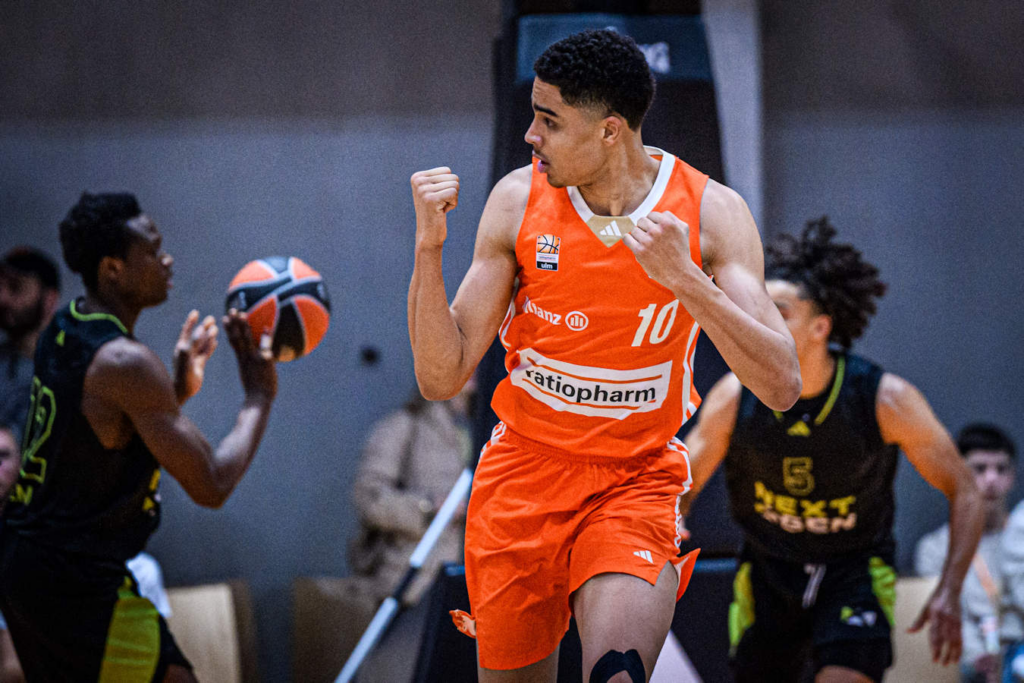
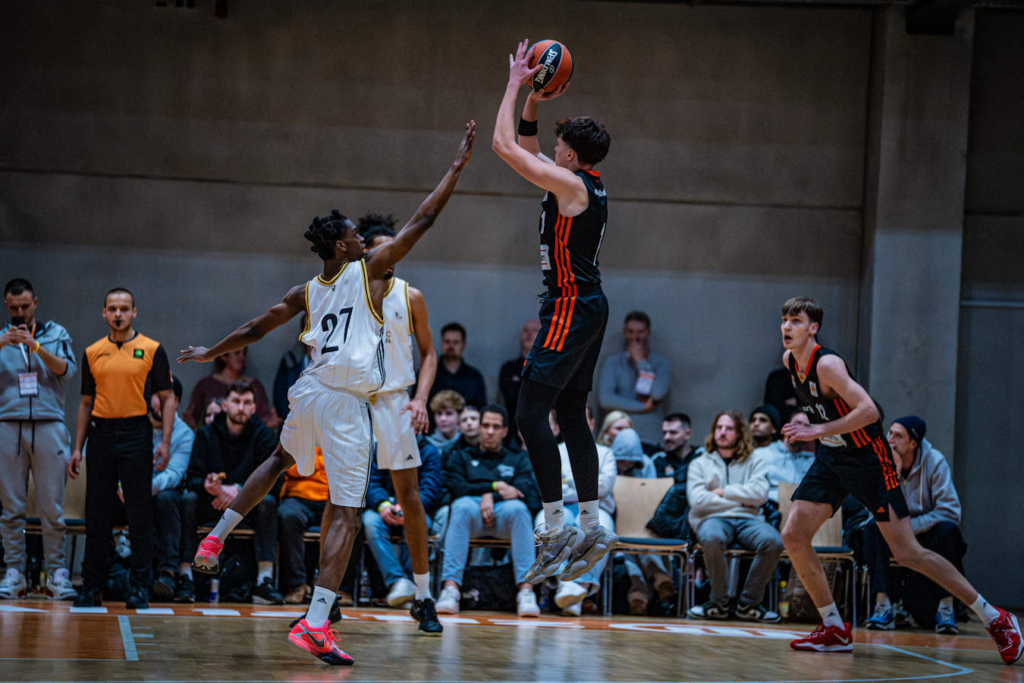
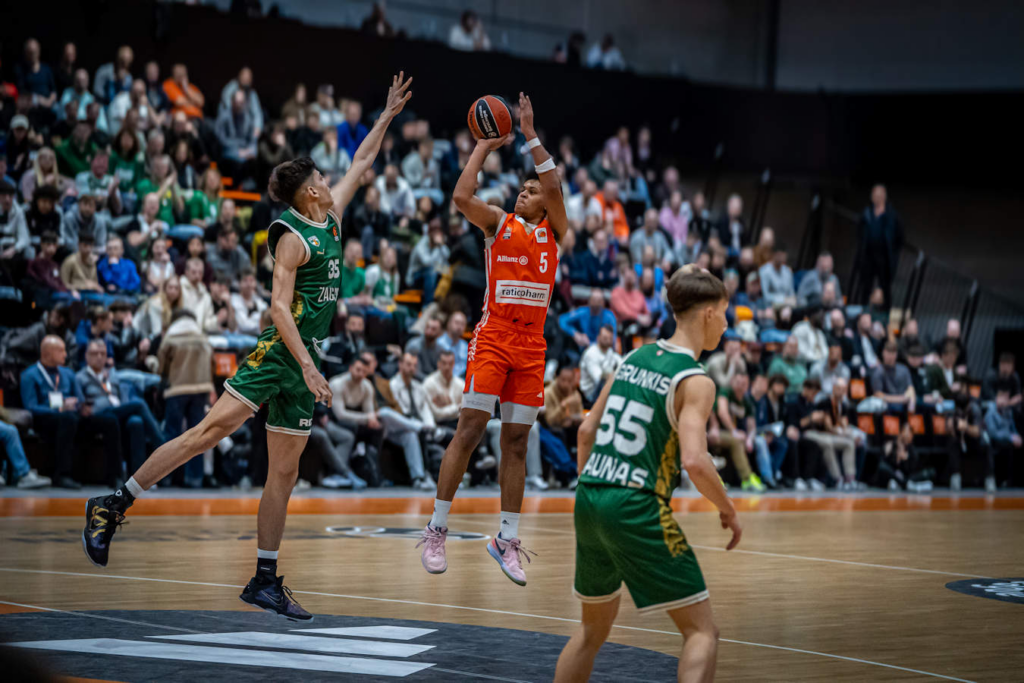
Niko Jerkic (6’8″) led his team in scoring, averaging 18.2 points per game, while stretching the floor efficiently with 43.3% shooting from three on high volume (7.5 attempts per game). His ability to pair well with Endurance Aiyamenkhue added balance to the offense. With good positional size, Jerkic was able to contribute minutes at both the small forward and power forward positions. He showed no hesitation in taking shots, displaying confidence and fluid shooting mechanics. In addition to his scoring, he contributed with 4.5 rebounds per game. Jervis Scheffs (6’5″) also stood out with his scoring instincts, averaging 15.2 points in close to 26 minutes per game. He attacked the basket effectively, finishing well around the rim both on drives and off the dribble. While primarily a slasher, he also provided decent shooting from behind the arc, hitting 35% of his threes on 5 attempts per game. Throughout the tournament, he had notable scoring streaks, showing the ability to heat up quickly and impact games with his offensive firepower.
Oliver Kullamaee served as the floor general for Ulm, demonstrating his versatility and leadership throughout the NextGen Tournament in Ulm. The 6’3″ Estonian point guard controlled the pace of the team, effectively setting up teammates and orchestrating the offense. He averaged 8.5 points per game, struggling inside the arc (27.8% on two-point attempts) but finding success from deep, shooting 36.4% on 5.4 three-point attempts per game. Beyond scoring, Kullamaee contributed across the board with 4.5 rebounds, 5.2 assists (with only 2 turnovers), and 1.8 steals per game, showcasing his ability to distribute efficiently with a 2.6 assist-to-turnover ratio. He provided security as a playmaker, creating open looks with precision and efficiency. Defensively, he applied consistent ball pressure, using his active hands to force steals while also disrupting passing lanes. His lateral quickness allowed him to stay close to his assignment, making him a reliable presence on both ends of the floor. – Theo Anastasoudis
NEXT GEN ULM
Unlike Munich, the Next Gen Select Team didn’t collect the trophy in the other German venue of the 2025 edition. Still, the talent on this team was undeniable, starting with Davi Remagen. The 6’3 point guard controlled the offense for his team, proving to be a natural leader as well. Playing on and off the last few seasons, Remagen took advantage of the opportunity to play in Ulm, ending up with 15.8 points per game on 52/54/80 splits, adding in 3.2 rebounds and 3.0 assists. A broad-shouldered guard, he was able to use his physicality well getting to the rim, where he always invited contact. When given the space, he provided outside shooting off the catch or dribble on more than three attempts per game. With a great outing in NextGen Euroleague’s third qualifier, he’s poised to become one of the premier European guards of his generation. Right beside him, Samu Adler and Ignas Urbonas complemented him really well with completely opposite play styles. Shooting 37% from three on close to seven attempts per game, Adler proved to be one of the most complete shooters in the tournament. Both off movement or spotting up, his shot is trending in the right direction, especially as a 6’6 guard. Sprinkling in some rim attacks given his shooting gravity, he ended with 12.8 points. Playing in only three games, Urbonas was much more of an inside threat with his 6’7 height and strong frame. Great cutter and driver, he provided finishing at the basket as a post creator as well and was a great help on the defensive end.
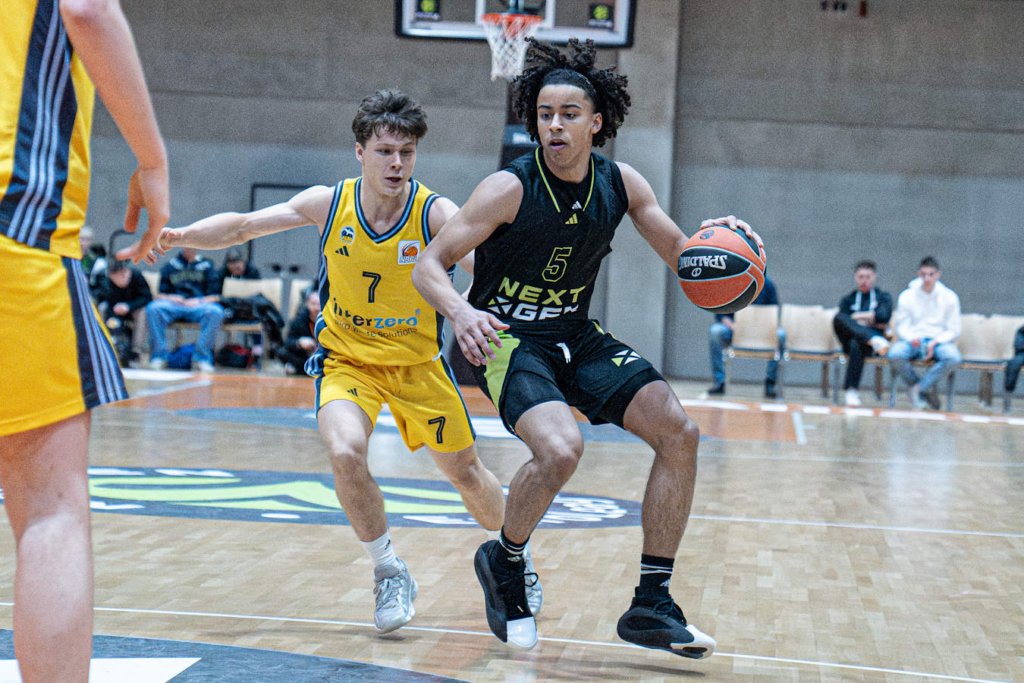
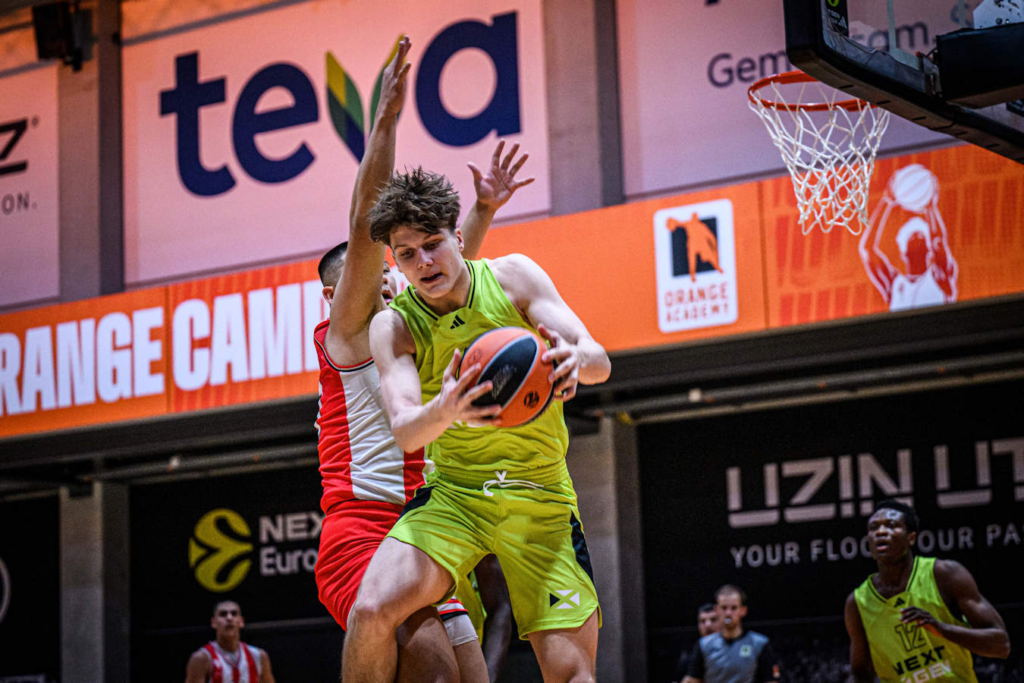
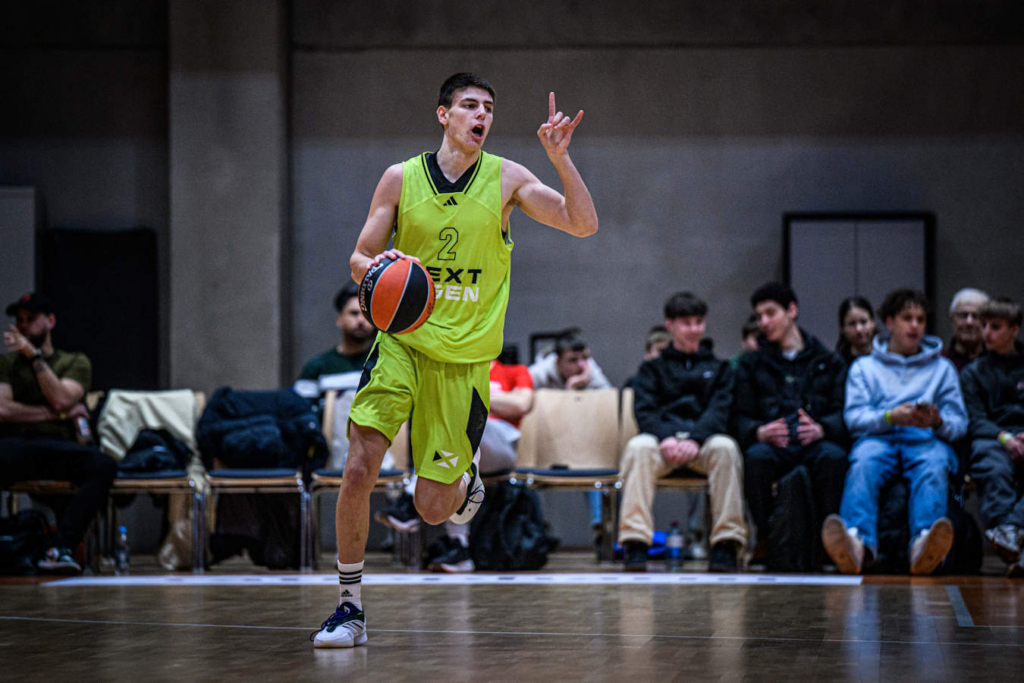
In his second stint with the Next Gen Team, Eurohoops Showcase alum Ivaylo Skrinski didn’t disappoint coming mainly off the bench. Although his shot wasn’t at the level he has provided before, his paint attacks and creative finishing at the rim were pretty interesting. Playing a tweener role of floor general or more off-ball guard, Skrinski tried to get teammates involved while driving to the rim. 7’0 Maodo Mane wasn’t as impactful as anticipated, but was still an intriguing rim running big. Good finisher at the basket and rebounder, his calling card was the rim protection, with 1.5 blocks per game. Mobile, nimble and with quick reads to deter shots inside, the Senegalese youngster who only turns 18 in the last day of the year provided great flashes. – António Dias
LDLC ASVEL VILLEURBANNE
A bit of an underwhelming campaign from the French side in a tough group. Despite the uneven performance from the team, no player left the Ulm qualifier with a bigger stock rise than 6’5 Adam Atamna. He put together the highest scoring average of the NextGen Euroleague/Adidas Next Generation Tournament at 33.0 points per game, shooting 62.7% from two, 48.6% from three and 93.3% from the free-throw line, with 7.0 rebounds, 2.8 assists and 3.2 steals to accompany. Atamna’s breakout party was felt throughout the whole weekend and all over the floor. A poised scorer on all three-levels playing as an off-ball guard, his consistency and patience with the ball in his hands is so advanced for his age. Got every shot he wanted with an impressive arsenal of dribbling and finishing options at his own pace, acting as the main play finisher for his team. Had some interesting moments as a distributor which may open up the door for more initiator repetitions in the future, with quick reads on the ball and passes that caught the defense off guard. On the defensive end, the fatigue was felt a bit towards the end of the qualifier, especially on the ball but his work off of it was still eye-opening. Great reads on the passing lanes, ready to help out and with quick hands making him look much more mature than the opposition he faced. Was able to create turnovers as a helper getting his body in front of drivers to win offensive fouls, sometimes late in the game on plays that changed momentum. Left Ulm as the biggest individual winner of the tournament and should be one of the names to keep in mind out of France in the next few months.
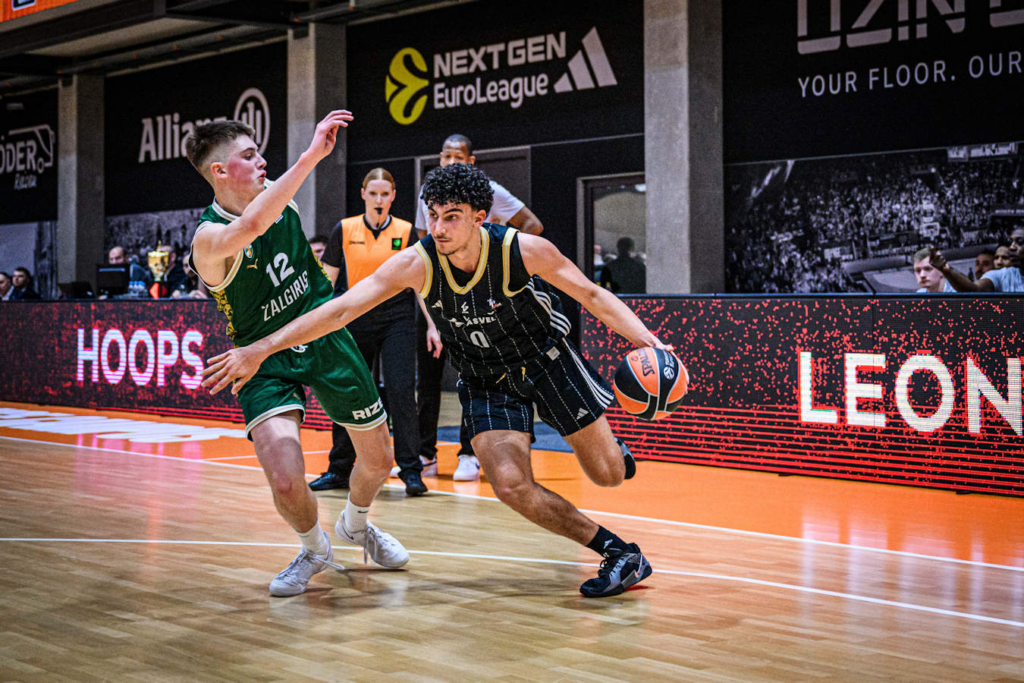
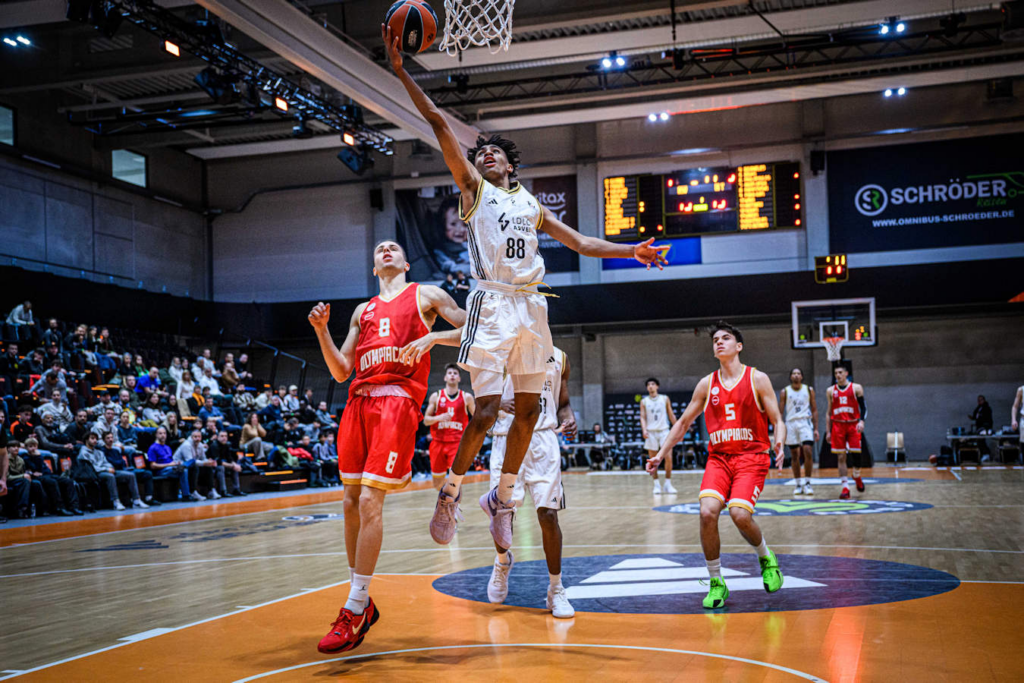
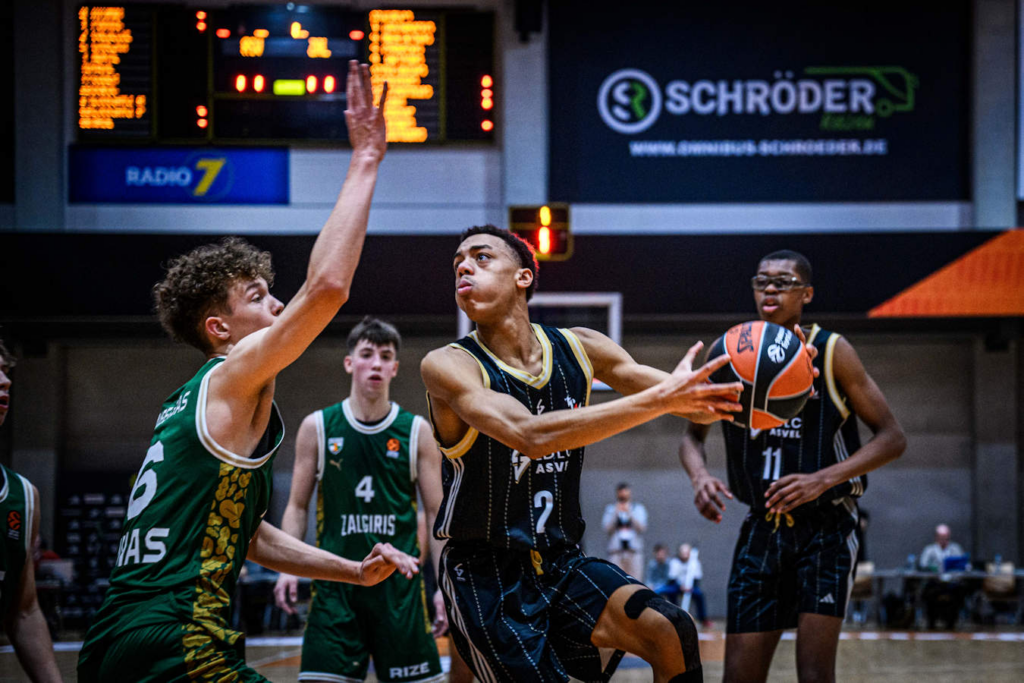
Marvyn Wade‘s second presence in the NextGen Euroleague was a bit inconsistent on the offensive side, despite the 11.8 points and 3.2 assists. Wasn’t really efficient inside or outside, although the flashes of off-ball play and transition finishing were there. His versatility on that end was noticeable. Despite that incosistency, his defense was always at a high level. His long arms and great lateral quickness allow him to guard on the perimeter and even put pressure full court, creating many problems to opposing ball handlers. Theo Guedegbe‘s 5.8 assists as the main initiator for ASVEL at 6’6 shouldn’t be discounted despite his trouble shooting the ball. He was always looking to get a teammate open, looking great in the open court but also with instinctive reads off the pick and rolls. Seemed a bit hesitant when it came time to shoot the ball, but his playmaking makes up for it. 6’10 Adrien Porras came over to Europe to join ASVEL, showcasing his athletic traits despite looking a bit lost at times – which can be explained by the lack of time with the team. Quick leaper with good mobility, he provided rebounding, play finishing and 1.5 blocks per game, all things that we can attribute to his physical tools. The potential is there, even if the numbers don’t fully show it, in what wasn’t an easy task for the Mexican. – António Dias
OLYMPIACOS
Although this year’s team didn’t feature the same level of quality as last year’s squad, which included Abosi, Rozakeas, Papastavrou, Spartalis, and Ntapsis, they still managed to perform as a cohesive and solid unit, delivering strong performances against ALBA and ASVEL. Two Olympiacos players stood out the most during the tournament: Theodoros Pavlopoulos and Giorgos Bourneles, both making a significant impact with their performances. Theodoros Pavlopoulos (6’7) made a strong impression at the NextGen Tournament in Ulm, showcasing his positional size, fluid movement, and scoring versatility. With a 6’9 wingspan, he possesses natural tools on both ends of the floor, though adding muscle strength would enhance his physical presence. Over four games, he averaged 15 points, 5.2 rebounds, 3.2 assists, and 1.8 steals, demonstrating his ability to score both on and off the ball, shoot efficiently from deep (34.5% on 7.25 attempts per game), and finish at the rim. His court vision and passing stood out, particularly in pick-and-roll situations, where he created open looks for teammates. Defensively, Pavlopoulos showed good positioning, active hands, and decent lateral quickness, allowing him to disrupt plays and force turnovers. He also excelled on the glass, leading his team in rebounding, which helped him generate transition opportunities. His combination of size, skill, and two-way impact makes him a promising prospect with room to grow physically.
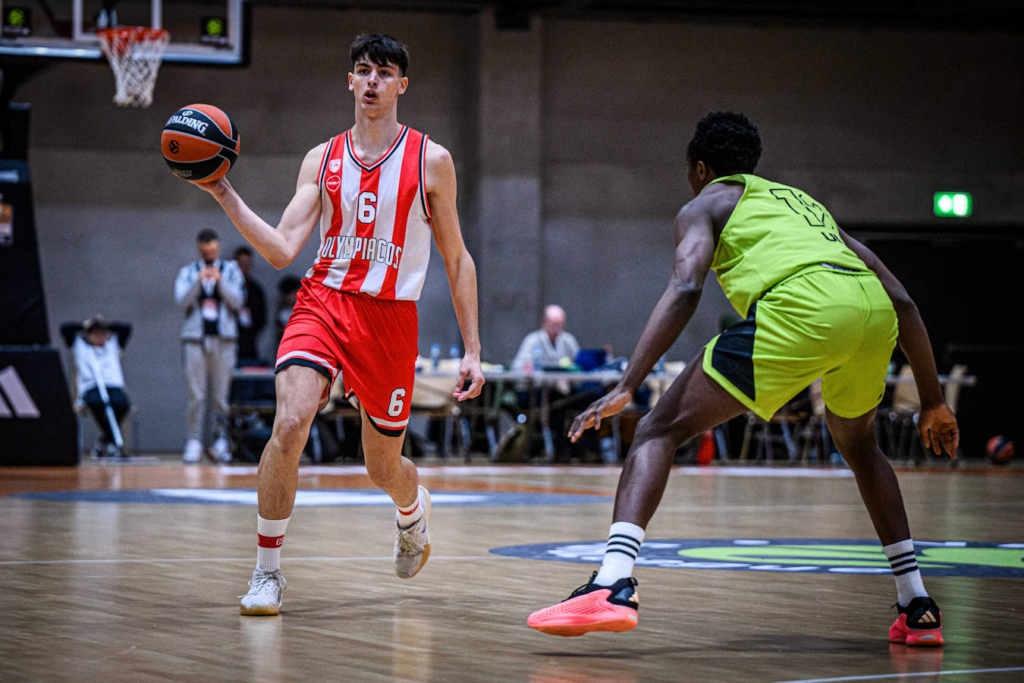
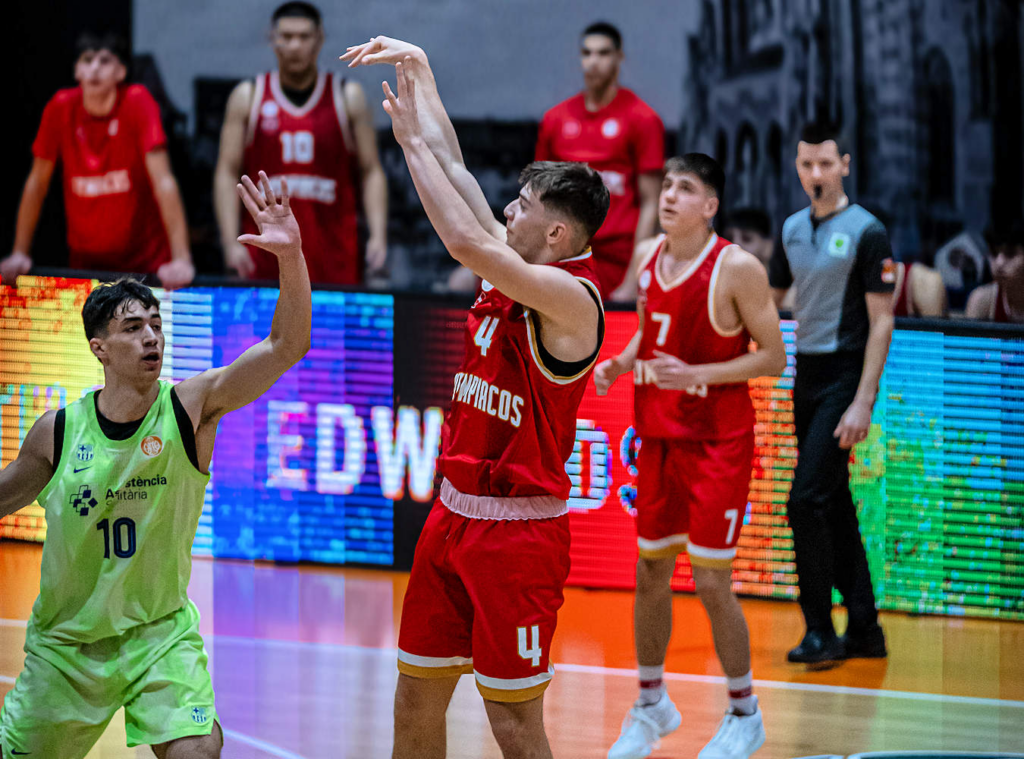
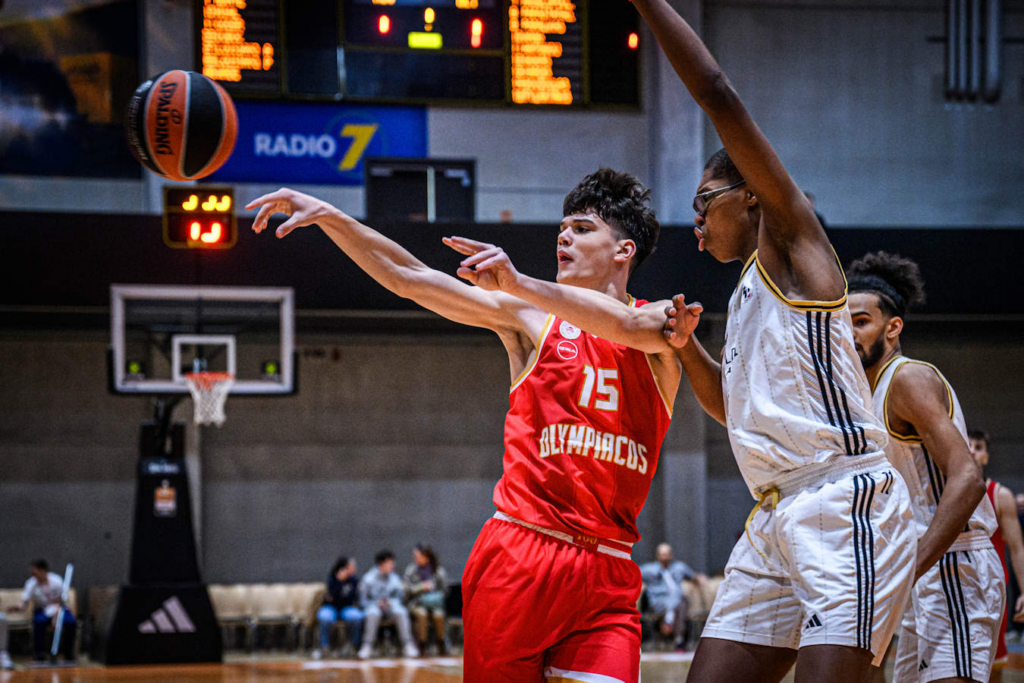
Giorgos Bourneles (6’4″) led his team in scoring, averaging 16 points per game, while taking a high volume of three-point attempts (10 per game) at a 32.5% clip. While not a traditional shooter who navigates through screens, he mostly scored by finding success in pull-up jumpers off the dribble and spot-up situations. Marios Fylaktakis (6’6″) also had a strong tournament, contributing with 13 points and 4 rebounds per game. A versatile yet undersized power forward, he played with relentless energy, physicality, and toughness, making a strong impact on both ends of the floor. – Theo Anastasoudis
ALBA BERLIN
ALBA’s performance didn’t meet the team’s aspiration in this Ulm qualifier, although a win in the last game serves as a good omen for the future of a really young team. Matheo Hermann was the main scorer for the Berlin team, with 11.5 points to go with 5.8 rebounds per game. Good rim attacker with a solid frame to take on contact inside, Hermann impressed me with his defensive chops. Aggressive on the ball, goes through screens and offers his team a good point-of-attack option at 6’4 with good mobility and ball pressure. The 6’11 towers of Nevio Bennefeld and Lukas Klein complemented their games pretty well. While Bennefeld was more of a floor spacer – shot 50% on two attempts a game from three – and a post up creator, trying to use his size on the defensive end, Klein was more of a roller and play finisher at the basket. Both long athletes, their lack of strength was felt in the first two days, but the agility at their size is intriguing.
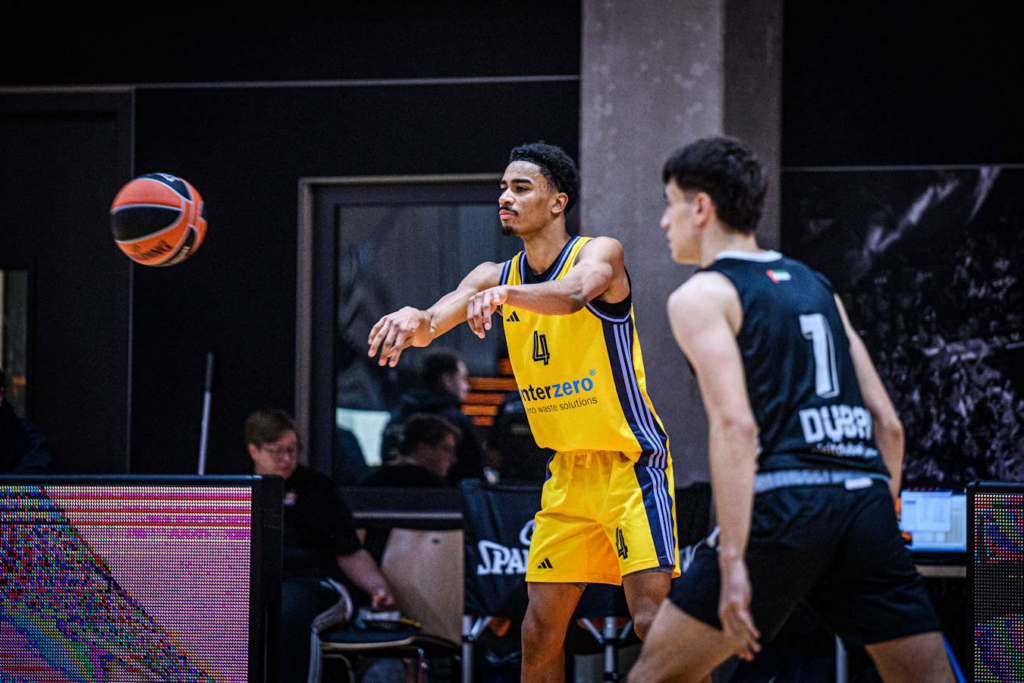
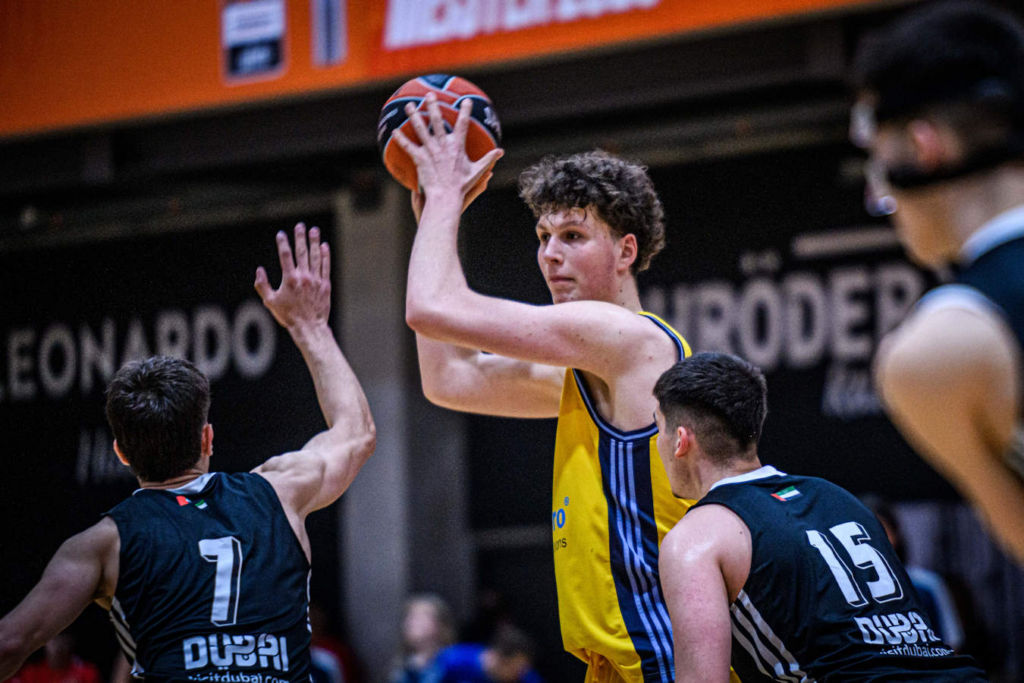
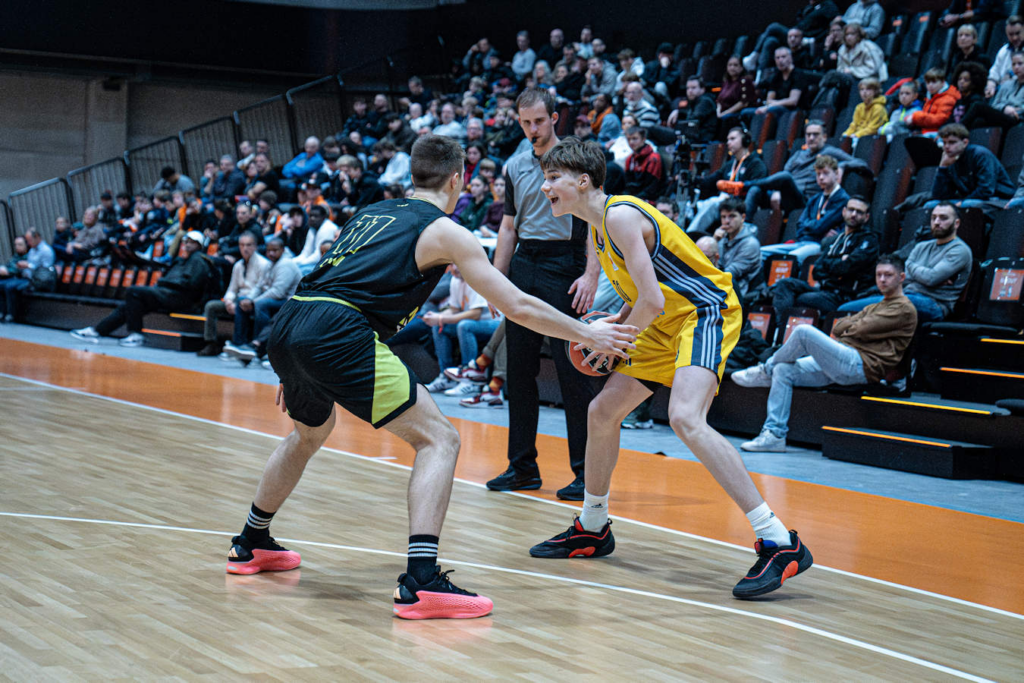
6’9 Richard Schmitt provided the shooting to go along with the team’s big men and some interesting mobility as a defender in space, while the 2008-born duo of Fin Borczanowski and Anton Kemmer brought some spark in spurts to the team. Borczanowski as a versatile guard, with some instances as a ball handler given the team’s lack of option in that regard. For Kemmer, who debuted last year at the Berlin finals, this wasn’t the breakout tournament many were expecting, but his rim attacking at 6’8 was there, with great focus on the offensive boards as well. Continues to develop as a driver at his size, but looked a bit more timid as a shooter this time around. – António Dias
DUBAI BASKETBALL
Dubai Basketball’s journey in the German away trip concluded without a win. In this event, Coach Krasopoulos’s young squad showcased flashes of sound technical fundamentals and individual growth, though they ultimately lacked elite bodies and extraordinary talent. Bogdan Zekavica emerged as the top scorer with 13.5 points: this reactive 6’5 guard showed his prowess as a committed driver, consistently using his smooth hands finishing around the rim. However, he will need to temper his enthusiasm to avoid unnecessary mistakes. Emmannouil Manolopoulos dazzled with his quick first step and change of pace: despite his short 6’0 body, displayed impressive accelerations off the dribble, maneuvering through traffic with shifty and crafty moves that allowed him to create opportunities and challenge defenders effectively.
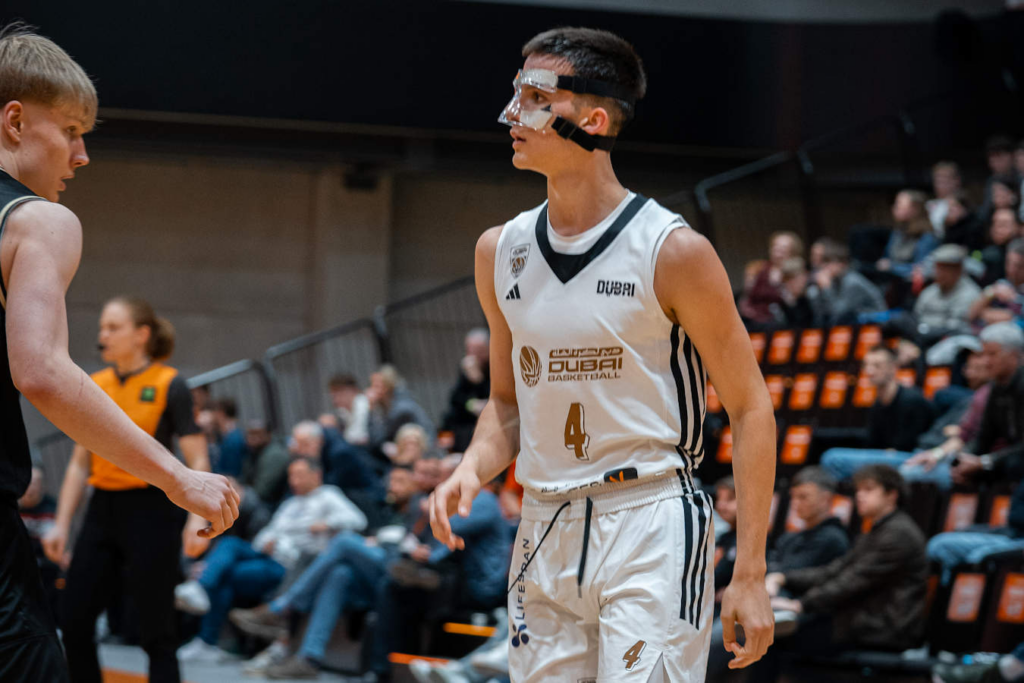

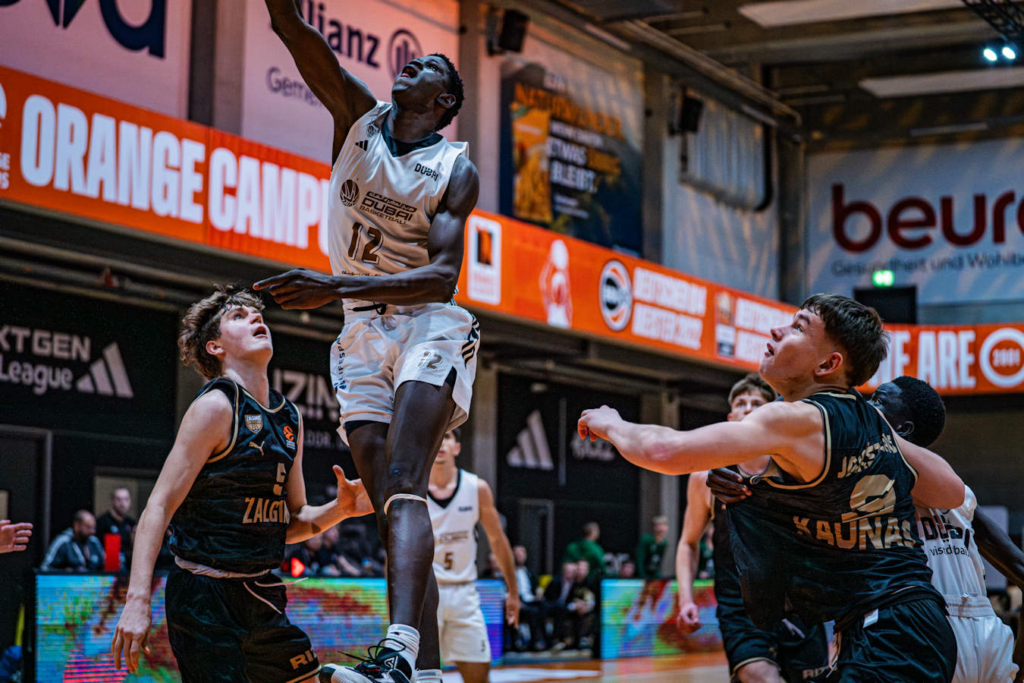
With his 6’9 sturdy physical, Eman Jasarevic provided a solid presence in the post. Used it to immediately win good positions back to the basket, exploiting his decent physicality and strong, durable legs to close down the paint. His fair and balanced movements helped him contribute reliably on both ends of the court. The minutes allotted to the 2010 Malian players, Diop Amath and Bacary Doucoure, offered promising glimpses of potential. Amath, with his long-limbed 6’7 frame, showcased his left-handed shooting — albeit with a relatively flat arc — and maintained continuous mobility on the floor. His ability to create plays off the dribble, aided by his long arms, was evident, even though his foot speed and core stability still need refinement. Doucoure impressed with an intriguing 6’8 build characterized by long legs and a compact trunk, which allows him to rise effectively for shots and adds versatility to the frontcourt. – Federico Gaibotti

